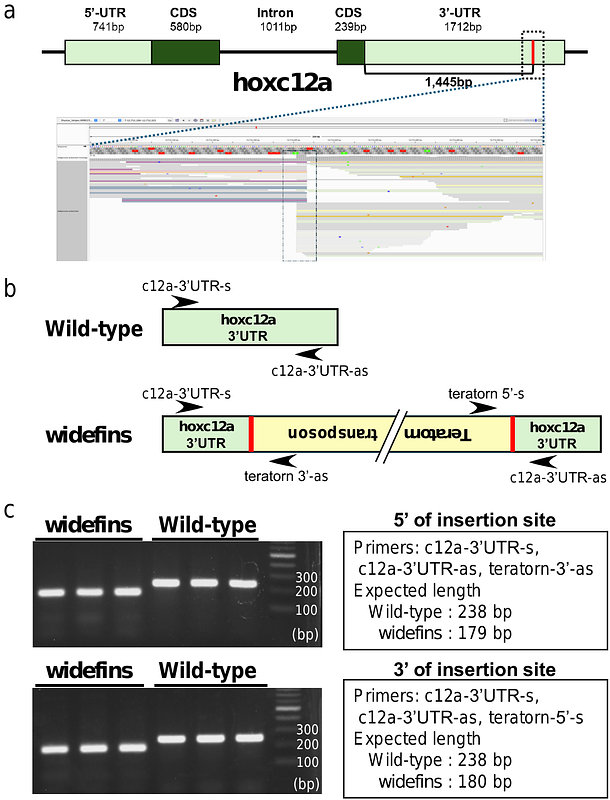The phenotypic variation of widefins medaka is due to the insertion of a giant transposon containing a viral genome within hoxca cluster

The phenotypic variation of widefins medaka is due to the insertion of a giant transposon containing a viral genome within hoxca cluster
Koita, R.; Otake, S.; Fukaya, N.; Yamamoto, K.; Maeno, A.; Kanno, H.; Matsuda, M.; Kawamura, A.
AbstractPhenotypic variation in species arises from genetic differences and environmental influences on gene expression. The differences in epigenetic modifications, such as histone modifications and DNA methylation, can also contribute to phenotypic differences, even in individuals with identical genetic information. However, the underlying molecular mechanisms remain not fully understood, particularly in vertebrates. The number of fin rays in teleosts, such as medaka, is a useful model to study this variation. In our previous study, the teleost Hox code was shown to play a crucial role in determining the anterior-posterior identity required for the formation of dorsal and anal fins. In this study, we investigated widefins medaka, a spontaneous mutant displaying phenotypic variation in the number of dorsal and anal fin rays. Whole-genome sequencing revealed that an extremely large transposon, Teratorn, containing a herpesvirus genome, was inserted into the 3\' UTR of the hoxc12a gene. This insertion decreased hoxc12a expression and, in some cases, also affected neighboring hox genes, resulting in variations in fin size and the presence or absence of dorsal fins. Additionally, hoxc6a, located 50 kb away from the insertion, was also downregulated in widefins medaka. These findings suggest that this large transposon insertion leads to a reduction in nearby hox gene expression, contributing to the phenotypic variation observed in widefins medaka. These results highlight the role of transposable elements and epigenetic regulation in generating phenotypic diversity in vertebrates.